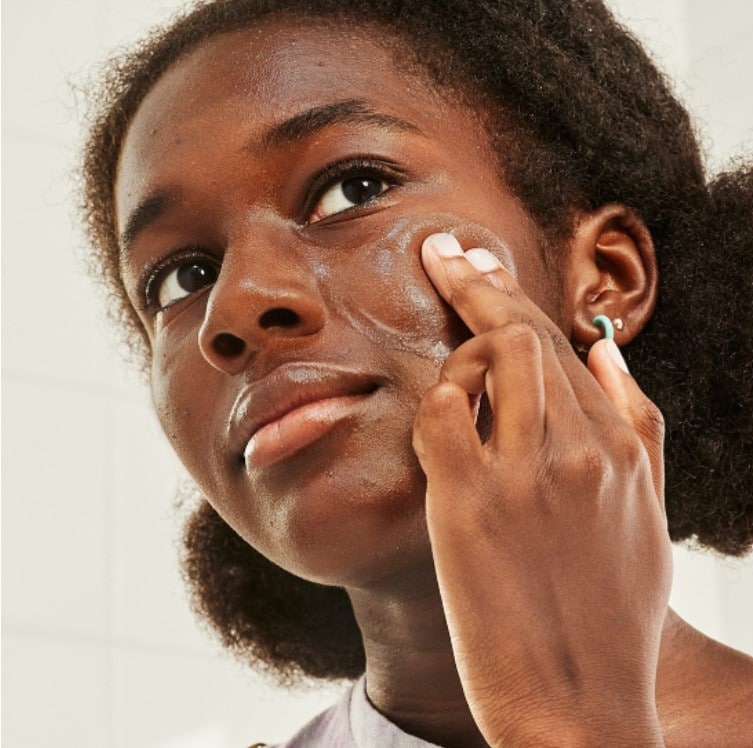
Skin Purging vs. Breakouts – What’s the Difference?
![]()
What Is Skin Purging?
Knowing the difference between skin purging vs breakout can help save time, money, and peace of mind. In general, skin purging is when your pores are reacting to an active ingredient in skincare. Skin purging is basically your skin getting worse before it gets better.
Skin Purging vs a Breakout
Telling the difference between a skin purge vs a breakout can help ensure you are treating the issue correctly. This also helps you stay in the know about your health, how to handle skin issues, and when to involve a dermatologist.
Adding to or making changes in your daily routine can trigger a breakout as your body reacts to the change. Consider these factors first: Have you recently started medication or tried a new food? Is there an ingredient in your haircare, skincare, laundry detergent, or other products that you may have a sensitivity to? Are you menstruating, or going through another hormonal change? Do you usually suffer from acne and breakouts? Keeping a food journal or product log can help narrow down possible culprits of your reaction.
Skin purging, on the other hand, is usually caused by active ingredients being introduced to the skin in new skincare. Purging is basically a symptom as a result of your new treatment. Examples of ingredients that are known to cause skin purging include hydroxy acids and retinoids. Signs of skin purging generally clear or subside within a reasonable amount of time, which is good news for anyone looking for results that come with active ingredients in skincare.
What Does Skin Purging Look Like? – 5 signs
If you are noticing what appears to be a breakout, and are asking yourself “is my skin purging?”, make a list of any changes in your skincare routine or treatments. Yes, skin purging can look very similar to a breakout, but there are ways to differentiate the two. Here are some signs of what skin purging actually looks like.
Small Pimples
Also known as comedones, these are existing clogging pores that will enlarge and begin to make a head as a pimple. Sometimes, there is a mix of blackheads, whiteheads, blemishes, cysts, pustules, and papules where the product has been applied.
Dryness
Signs of skin dryness, flaking, peeling or sensitivity can be your skin purging or adjusting to your new product or routine.
Redness
Inflammation, signs of discoloration, or visible redness can be signs that your pores are purging or getting ready to purge.
Quick Lifecycle
Signs of skin purging can appear and then disappear faster than acne breakouts. Regular breakouts appear and then heal around 8 to 10 days, while skin purging can disappear much quicker.
Breakouts
Confusingly, breakouts can be signs of your pores purging, but the underlying cause wouldn’t be that of a breakout. Skin breakouts that indicate purging should not be treated with an acne product the same way a simple breakout would be because you are already using your active ingredient.
Is Skin Purging Good?
While it can feel uncomfortable and look like a breakout, skin purging is usually not “bad”. It may be tempting to stop using your new skincare, but sticking with it often allows you to reach your desired results.
Skin Purging Process – How Long Does It Last?
So how long does skin purging last exactly? It depends on your skin type, and how quickly your skin is usually purging pimples. Expect approximately 4 to 6 weeks of these symptoms, and if they last longer, be sure to reach out to your doctor or dermatologist.
Can Skin Purging Be Avoided?
Sure, skin purging can be avoided, but if it means clearer, better skin in the future, why would you want to? Skin purging can be tamed or avoided by not switching up your skincare routine or products, not using drying products, wearing sunscreen every single day, and keeping your skin as hydrated as possible. Our real advice, though? Stick with your new product, especially if your dermatologist is recommending it because the results will be highly worth it.
When It’s Just a Breakout
Sometimes, it’s nothing but a breakout! Likely not something you haven’t already experienced before. If you’ve tried a new product or food that is actually clogging your pores, your skin may be reacting through a breakout. Consider non-comedogenic skincare if you are prone to acne and breakouts, or keep a food journal to identify the culprit of your breakouts. Dairy is a common food group that exacerbates breakouts. Knowing the difference between purging and breaking out is helpful from the start. Always be kind to your skin when there’s a breakout present, applying a gentle skincare face mask or serum and taking a break from abrasive products. Do not punish your skin with an overload of products, which can cause a damaged skin barrier.
Now you are aware of the key differences between skin breakouts vs purging, and the action plan when each one occurs. Remember to always keep skin clean, protected with SPF, and hydrated by drinking plenty of water as the foundation of any skincare routine. Now you can put your best face forward with your ongoing journey in skincare.
Sources
- Indo American Journal of Pharmaceutical Research.
- American Academy of Dermatology Association. Are Your Haircare Products Causing Breakouts?
*All referenced results are based on an 8-week U.S. clinical and consumer study.
Learn more about Rodan + Fields and how you can get your most radiant skin ever. Trust your skin’s glow to the Doctors and to your consultant who know how to help you get your skin glowing.
Results may vary depending on multiple factors: age, gender, skin type and condition, concomitant products used, health history, location, lifestyle,
Share this with friends or family members. It will save their skin — and boost their confidence.
PM me for the best options to suit your budget 🙂
*information is taken from The Skincare Source.









